
Key Points
- Lumber/Gold Finds Some Footing
- Copper/Gold: Look Out Below
- Small Caps Begin to Weaken Relative to Large Caps
- Growth Shows Early Signs of Improvement Relative to Value
- High Yield Credit Spreads Confirm the Risk-Off Regime
Key Themes and Relationships
High Beta vs Low Volatility
The High Beta/Low Volatility ratio continues to decline below both 50 and 200-day moving averages and is heading towards support at the June 2020 highs. Note that RSI continues to remain in a bearish regime, one that’s defined the downtrend since the ratio rolled over below the major moving averages in Q4 of last year.
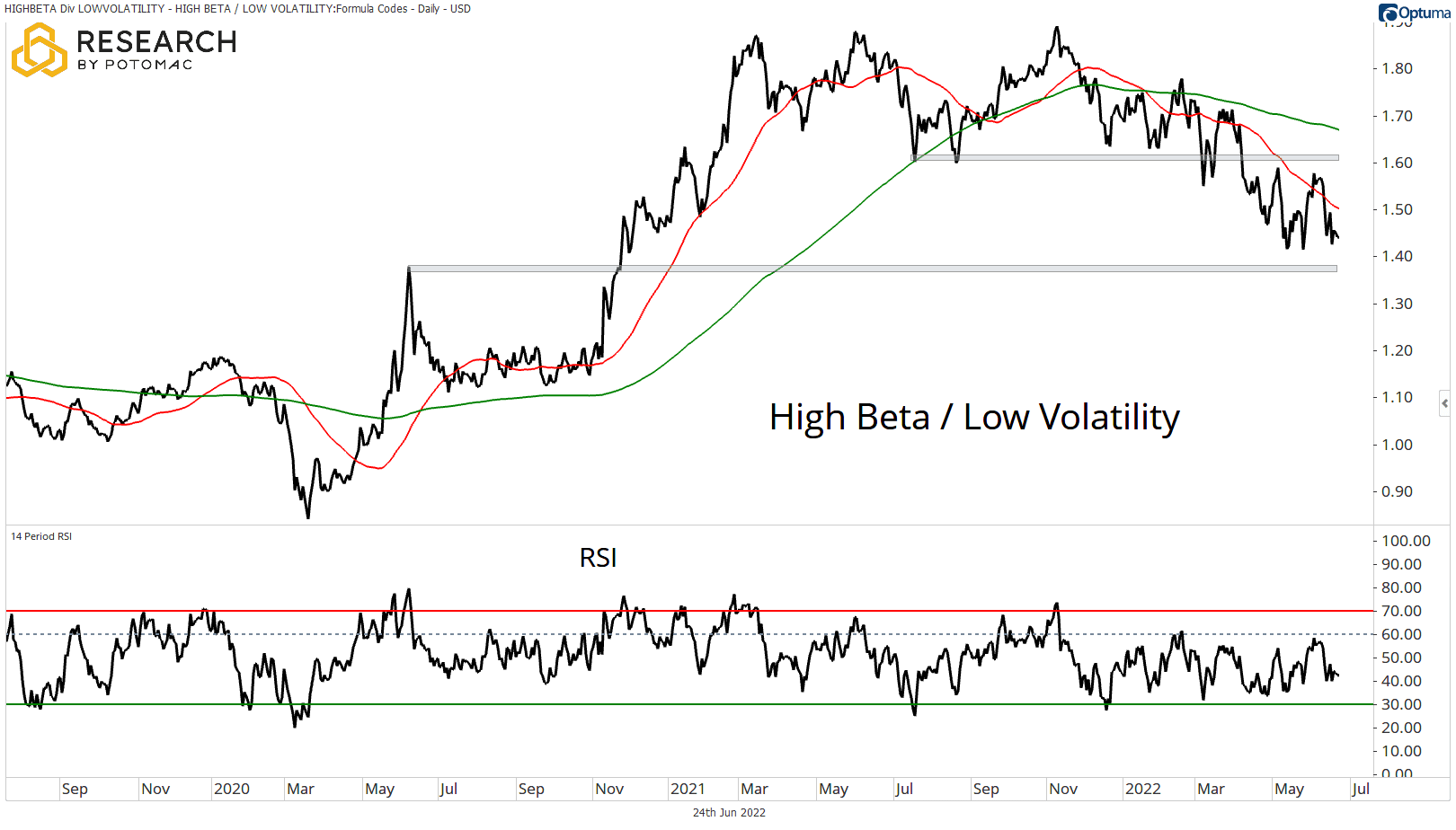
Consumer Discretionary vs Consumer Staples (Equal Weight)
The Discretionary/Staples ratio continues its descent below the highlighted long-term resistance zone and declining 50 and 200-day moving averages. Note that the 50-day moving average has provided resistance for the ratio all year long and remains an indicator that the risk-on crowd will want to see taken out to the upside. RSI remains in a bearish regime, confirming the downtrend.

Lumber vs Gold
The Lumber/Gold ratio has rallied from support at the November lows of last year below a declining 50-day moving average and a flat 200-day moving average. RSI continues to rally to the upside out of the oversold readings in May and June; however, until the downtrend line in momentum can be broken to the upside, it becomes difficult to make the case that recent price action is anything other than a countertrend bounce.
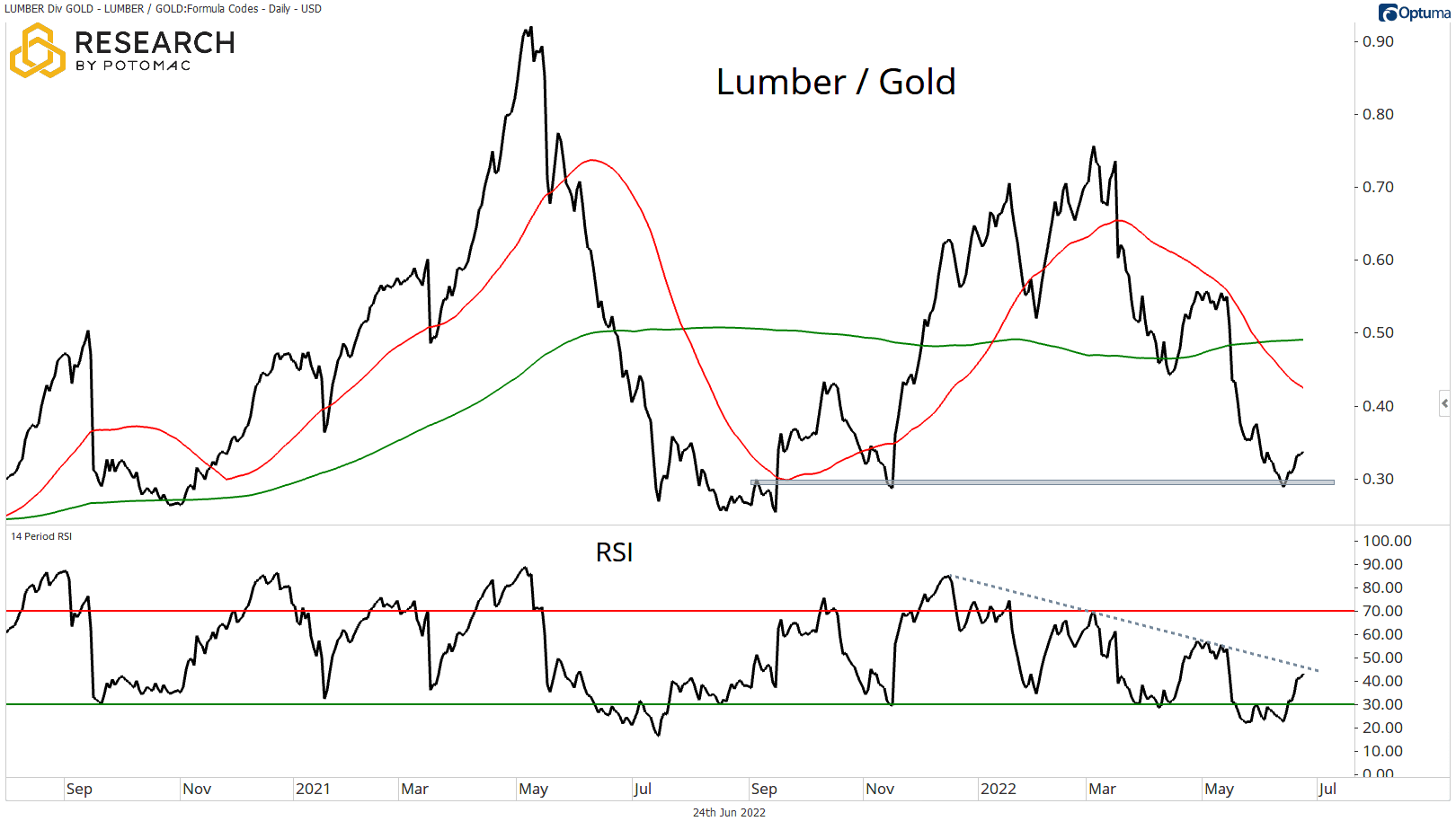
Copper vs Gold
The ratio of Copper/Gold continues its descent below broken long-term support on a strong downside move this week below the 50-day moving average, which is below the now-declining 200-day moving average. RSI has become oversold for the first time since the summer of 2020, confirming the downtrend.
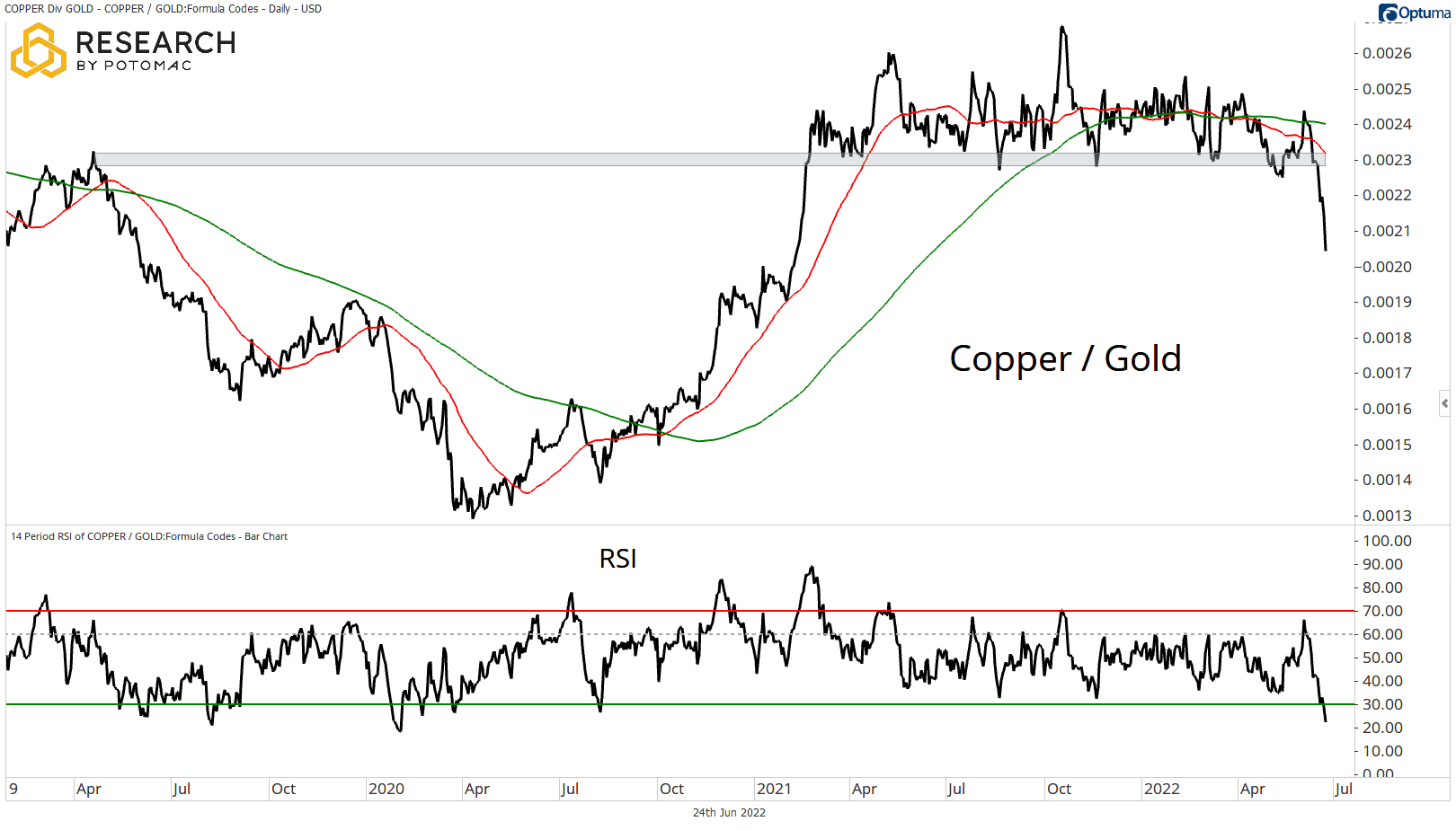
Small vs Large
The Small Cap/Large Cap ratio has subtly broken below the 50-day moving average in this week’s trading session as the relationship oscillates between support and resistance. RSI has broken below the 40 level that’s defined the bullish action over the shorter term and a key zone that the Small Cap bulls will want to pay attention to.
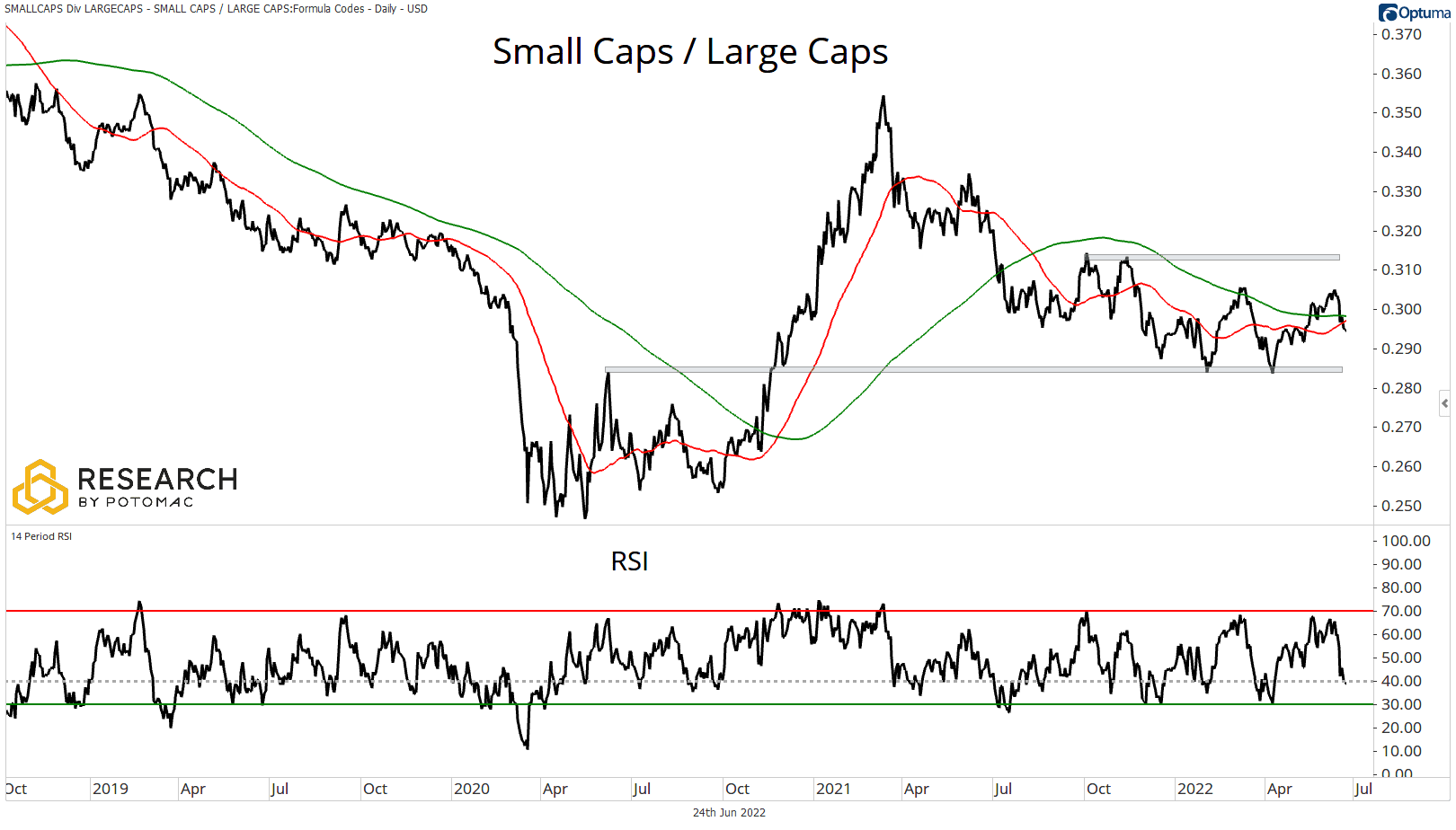
Growth vs Value
The Growth/Value ratio has made a material comeback to the upside this week, clearing both long-term resistance and the declining 50-day moving average to the upside. RSI is setting up an attack on the 60 level from below, a level that the Growth bulls will want to see cleared to the upside. While the price action has been encouraging for Growth relative to Value, prudence suggests for RSI to break out of the 60 level that’s defined the downtrend since Q4 of last year.
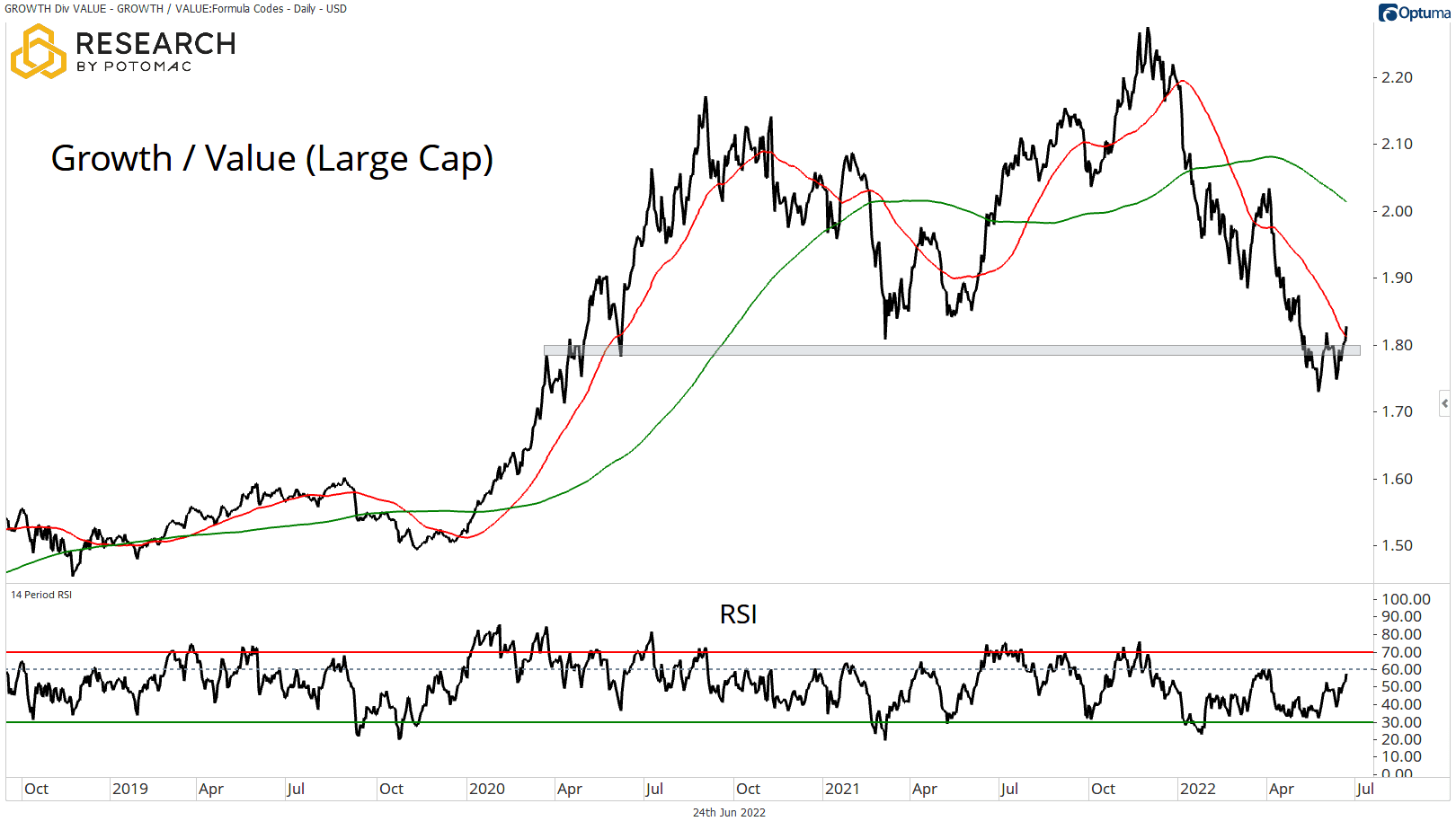
High Yield vs Treasuries
High Yield Credit Spreads have reached their highest levels since the fall of 2020 above rising 50 and 200-day moving averages on an overbought RSI. What’s most important to note with this upside trend in credit spreads is that it has been gradual, with higher highs and higher lows, rather than the swift upside spikes that we’ve seen in past market shocks. Further price action from the 5.30%-5.45% zone should give investors a better indication of the bond market’s appetite for risk, as this has been a zone of polarity in the past.
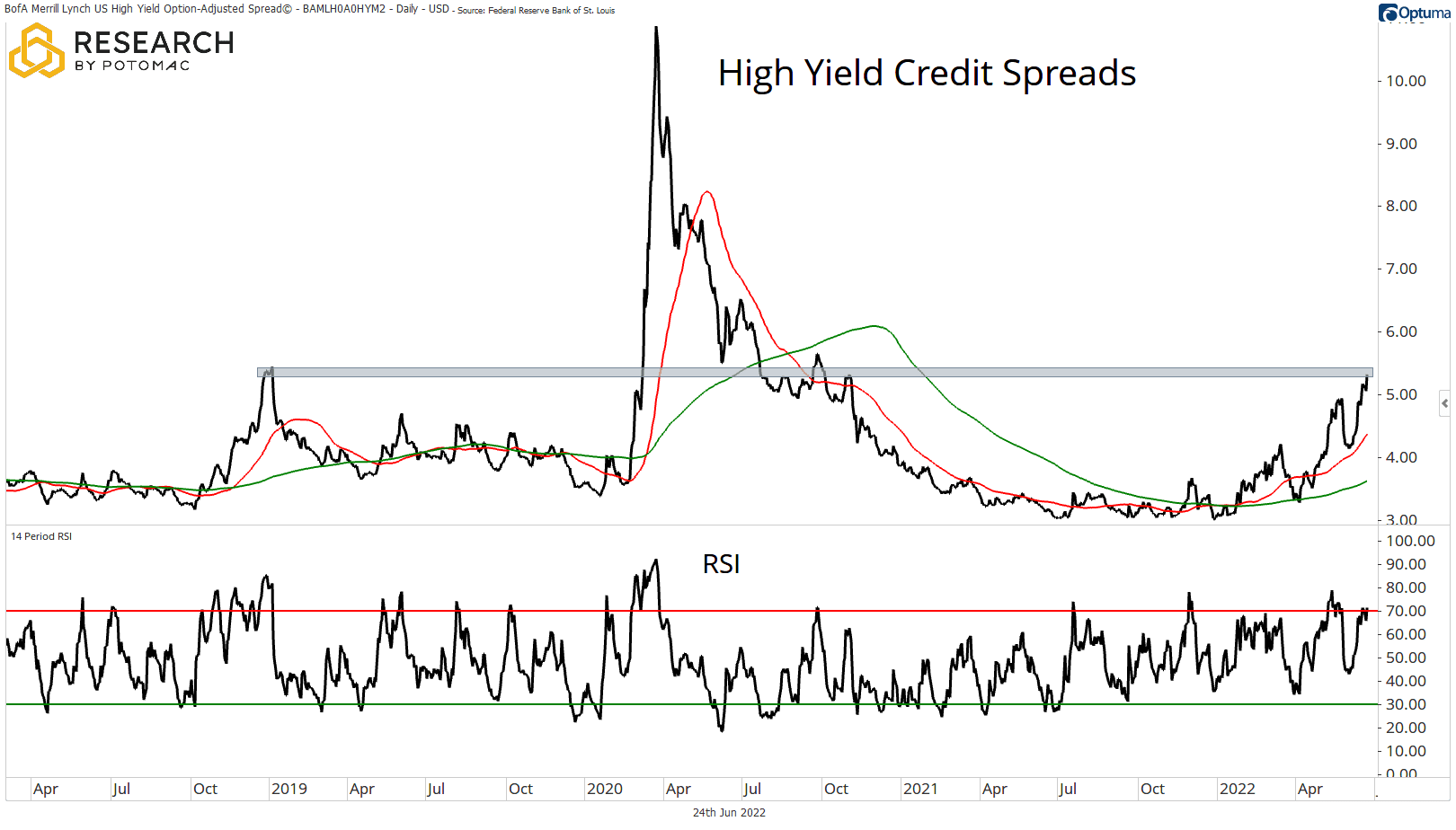
Take-Aways
Risk appetite across the ratios that we track continues to dwindle as global equity and fixed income volatility remains elevated. While signs of improvement have been noted in relationships such as Lumber/Gold and Growth/Value, it is still early to call a potential change in trend. The most notable development has been the continued gradual rise in High Yield Credit Spreads as the bond market continues to confirm the risk-off regime.
Disclosure: This information is prepared for general information only and should not be considered as individual investment advice nor as a solicitation to buy or offer to sell any securities. This material does not constitute any representation as to the suitability or appropriateness of any investment advisory program or security. Please visit our FULL DISCLOSURE page.
